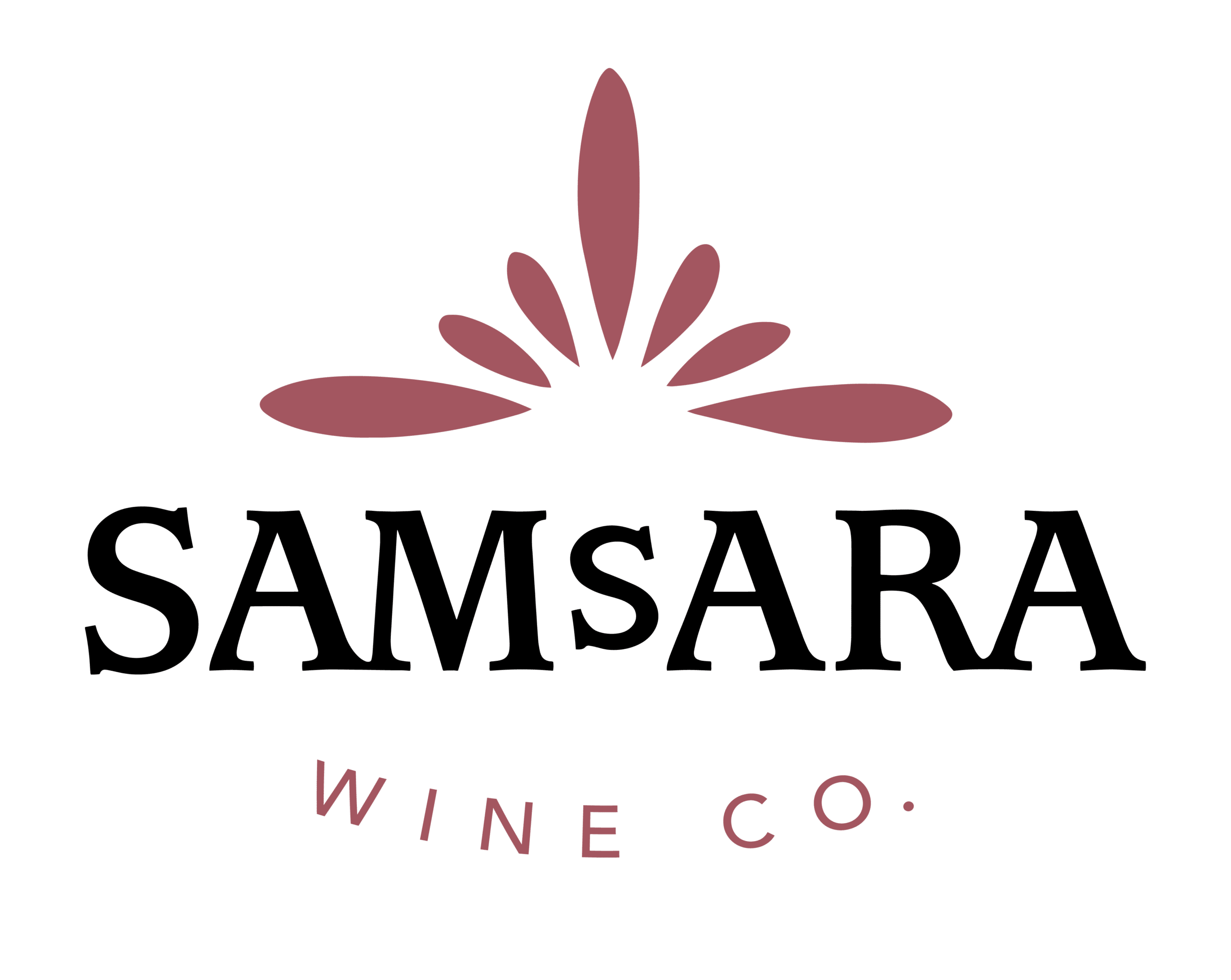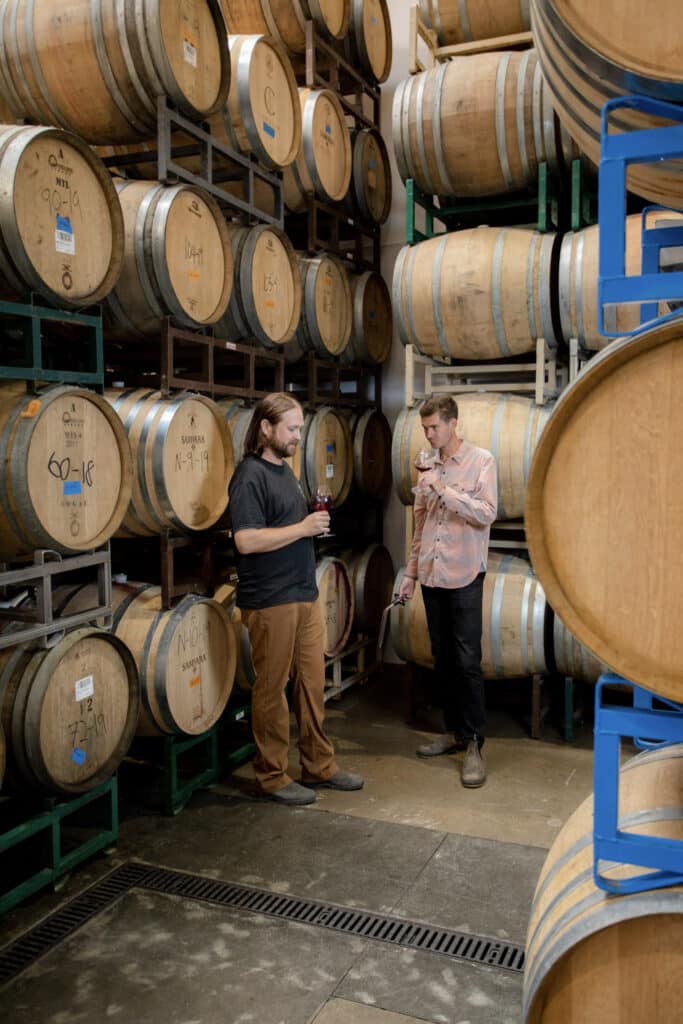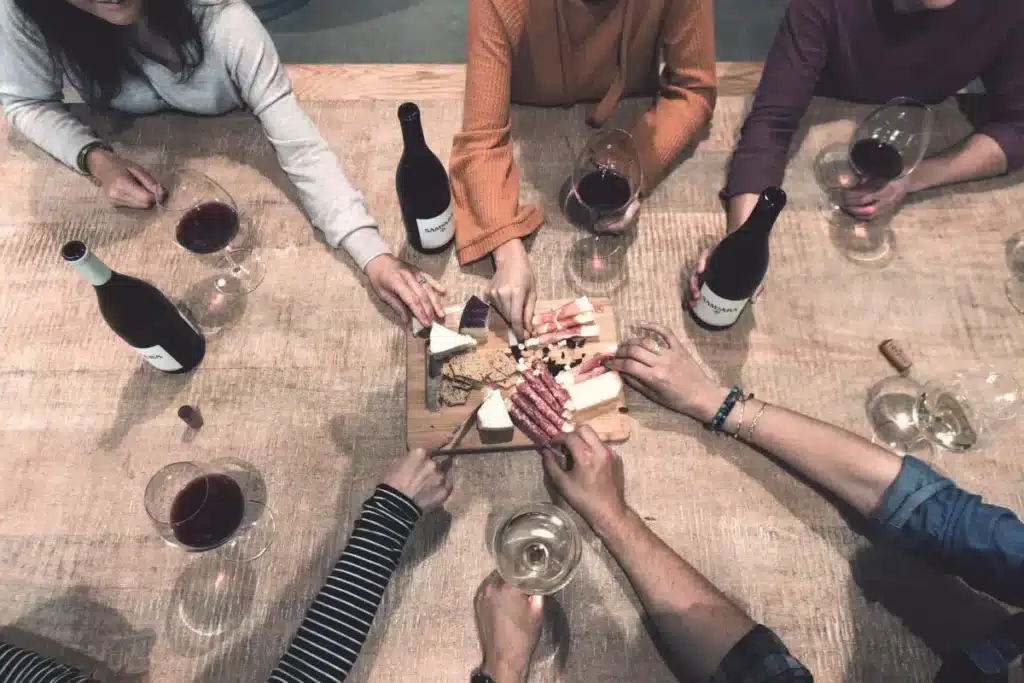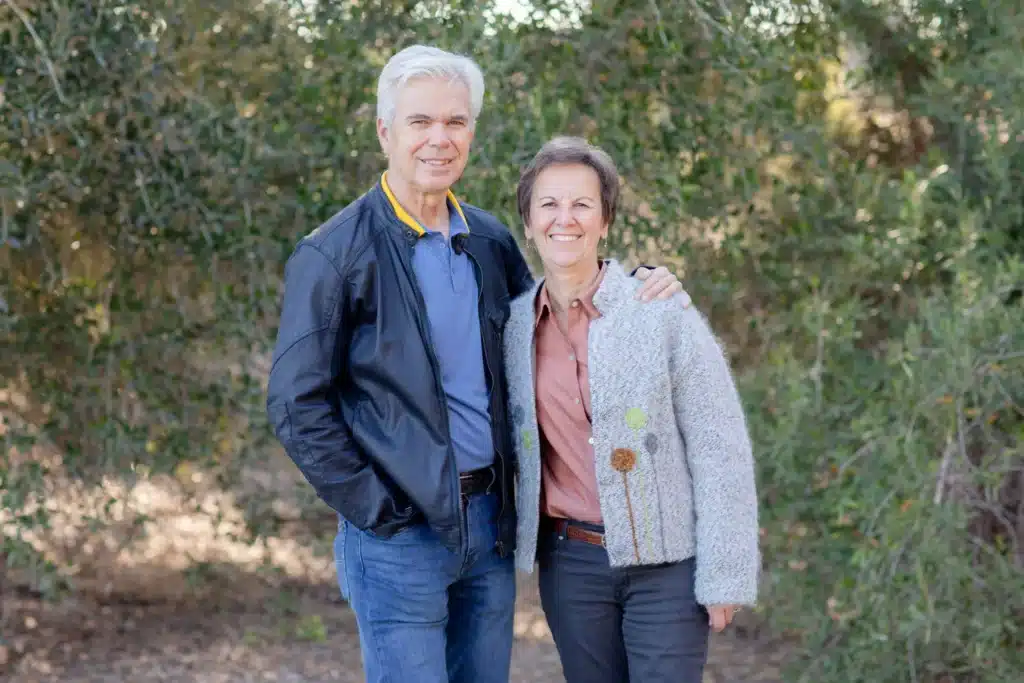No products in the cart.
The 2020 Vintage Growing Season – A Santa Barbara County Retrospective
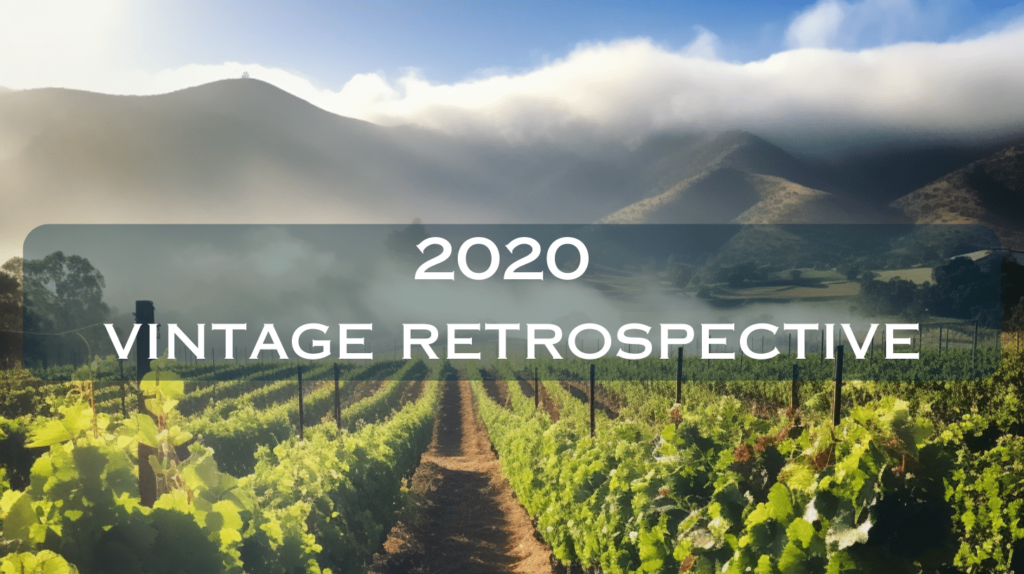
Think back to 2020 . . . everything was just fine until mid-March when BAM!, the world shut down to prevent the spread of COVID-19. But what was going on in the vineyards of Santa Barbara County? Miles and Matt sat down to discuss how a darn near perfect growing season accelerated quickly at the end . . . .
Miles: The 2020 vintage reds are rolling out! Refresh our memories about what was going on in the vineyards and winery . . . we know what was happening in the world at large!
Matt: The only good thing about 2020 may be the quality of the wine that we made. 2020 began as a typical Santa Barbara vintage with moderate weather and normal bud break timing. But, just to keep things interesting, there were some challenges in the growing season, particularly as we got closer to harvest. Yields were slightly lower in 2020 compared to the average, but not significantly impactful. This is actually optimal for us. Ideally, we prefer around 85% of the normal yield to ensure a spacious environment. Not necessarily for its effect on wine style, as marginal yield reductions don’t significantly increase concentration, but more about benefitting farming operations, ensuring cleaner fruit and less mold pressure.
Lighter yields lighten the workload for vineyard crews, which is positive for efficiently getting necessary work done without unnecessary labor. So, despite the challenges of 2020, the growing season looked promising, particularly when considering the impact of the pandemic on the world.
Miles: With the pandemic having basically closed down the world from mid-March to mid-August, what was that like for you as a winemaker and how did it affect your daily duties?
Matt: The growing season was a relief for me as a winemaker since the rest of the world had practically shut down. I have fond memories of being in the vineyards during that time. While everything else was like a ghost town, the vineyards provided a haven for me. I remember encountering my friend Brandon Sparks-Gillis from Dragonette at Radian one day. Since there wasn’t much to do, he suggested exploring the vineyard together, and checking out previously unexplored blocks.
The growing season remained magical and perfect. It did change slightly towards the end as we prepared for harvest in August and September. We encountered the classic Labor Day heatwave, a common occurrence in modern Santa Barbara winemaking.
Miles: Let’s dive into the Labor Day heatwave. Was is the standard fare or something different?
Matt: Well, the heat started becoming significant around mid-August. We transitioned from thinking we’d start picking grapes in early to mid-September to the realization that everything was ripening simultaneously, a couple of weeks ahead of schedule. This wasn’t the ideal flow for pinpointing optimal picking times. It’s preferable to have a cool, moderate weather entering harvest, allowing us to schedule vineyard picks predictably.
As you can imagine, during intense heatwaves, it’s like working in a hurricane, scrambling to safeguard the most crucial vineyards and their fruit by harvesting as quickly as possible. But, thanks to great planning and great relationships, the challenge of rapidly picking numerous vineyards was faced head on and we managed to bring in a significant amount of fruit, approximately 50 tons, over a three-day period.
This achievement set personal and winery records in terms of tons processed in such a short time. This nimbleness is an advantage of being a smaller winery, that can swiftly react to such situations. The strength of our relationships with vineyard partners is also crucial. In a year like 2020, when everyone wants to harvest at the same time, these relationships play a pivotal role. Our vineyard partners look out for us, and this collaboration is vital.
In summary, the crazy Labor Day heatwave and the simultaneous ripening presented a challenge to bring in the harvest. But despite all the challenges, the growing season in 2020 looked promising. The wines were exceptional and exciting, promising a great vintage.
Miles: Any particular standouts or key points we should be looking for?
Matt: The 2020 Rancho La Viña that we’re currently pouring is exceptional, one of the finest vintages of Rancho La Viña Pinot Noir. This excellence can be attributed partly to the vineyard’s inherent richness and structure, which paired well with the added fruitiness from the vintage’s warm weather. Our 2020 Chardonnays are also remarkable and have been well received since their release. The first vintage of Bentrock Pinot Noir from 2020 is also well worth noting.
Miles: Tell us more about the first vintage of Bentrock Pinot Noir . . .
Matt: Working with Bentrock Pinot Noir in 2020 was a delightful experience. The crop was slightly higher than in other vineyards, providing a buffer against the heatwave. Our block at Bentrock, situated at the back of the vineyard, holds a special place in my heart. It’s a secluded spot where I like to spend time, sometimes playing guitar or enjoying a sandwich under a favorite tree. The success of our first vintage from this block is particularly exciting.
Miles: That is exciting to have a personal connection to the place and to have a great first vintage from it. Any other insights you’d like to share about the 202 vintage?
If I may add, regarding the aging potential of the 2020 wines, while they are accessible when young, I believe they will also mature well in the cellar. Take Rancho LaViña as an example. Despite the approachability due to its cool growing season, it still retains balance and structure that should allow it to age similarly to the 2013 vintage. So, while they are enjoyable when young, they will also offer depth and complexity with aging.
Miles: That’s a significant point. I’m looking forward to discovering these 2020 wines . . .
